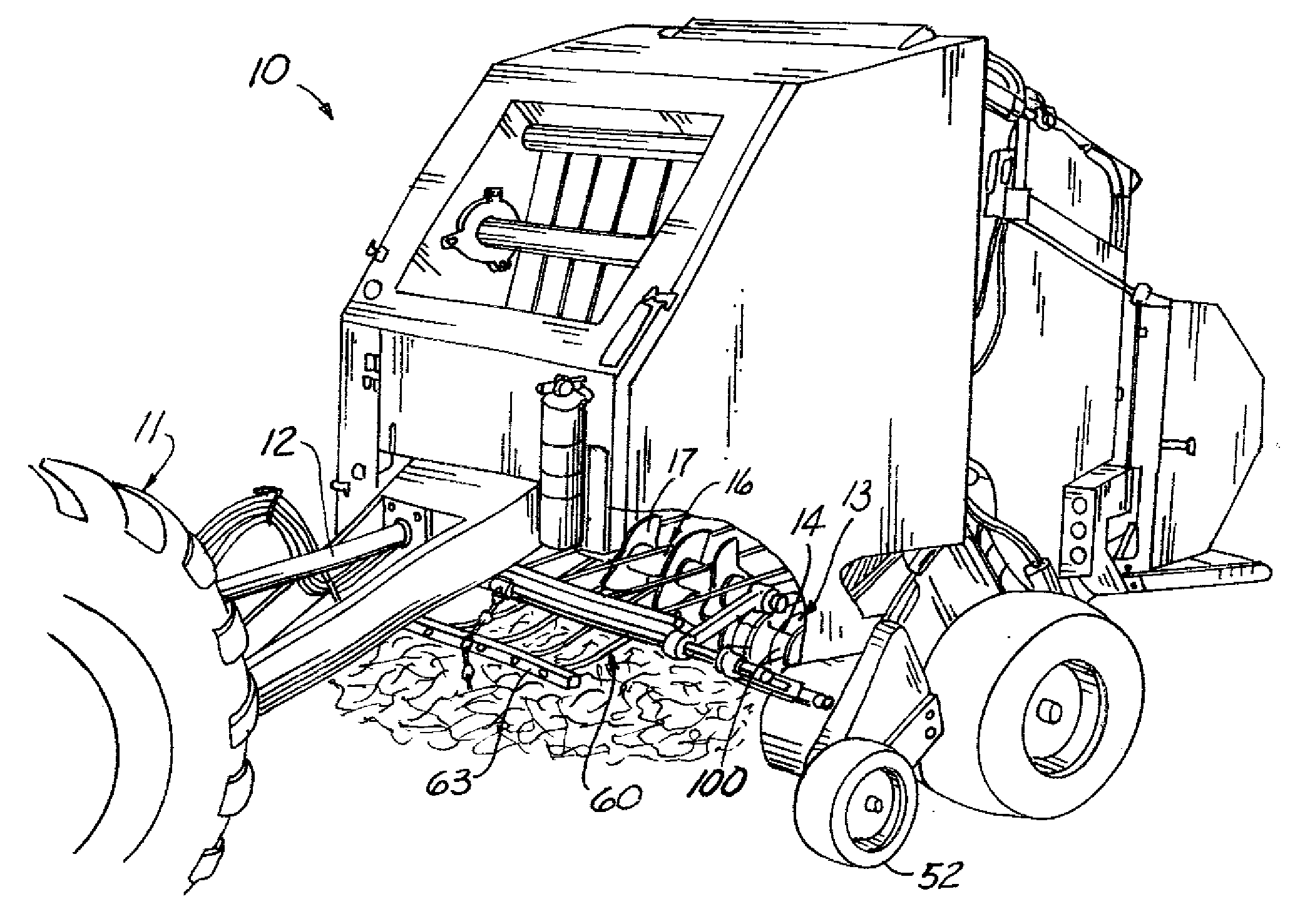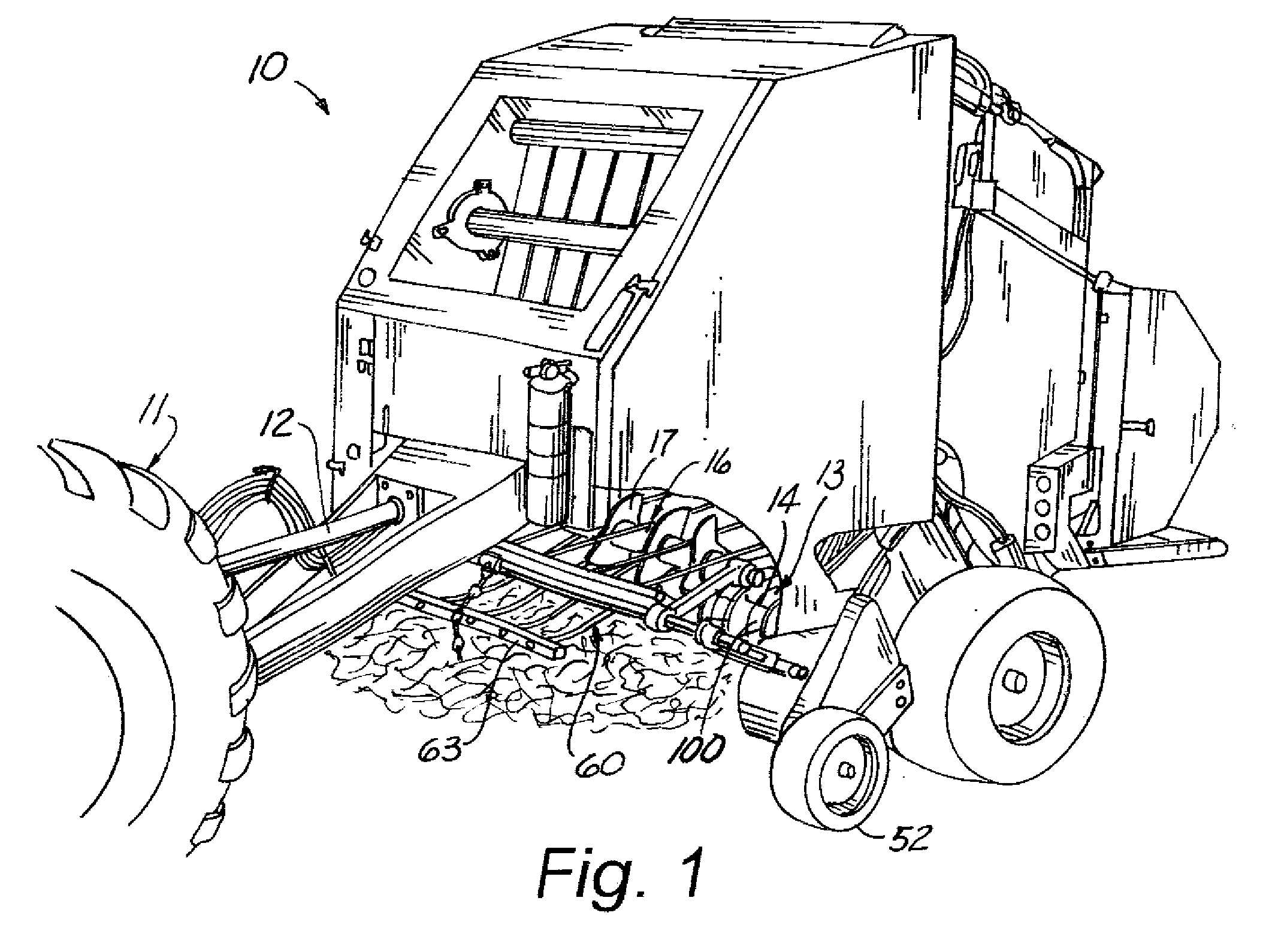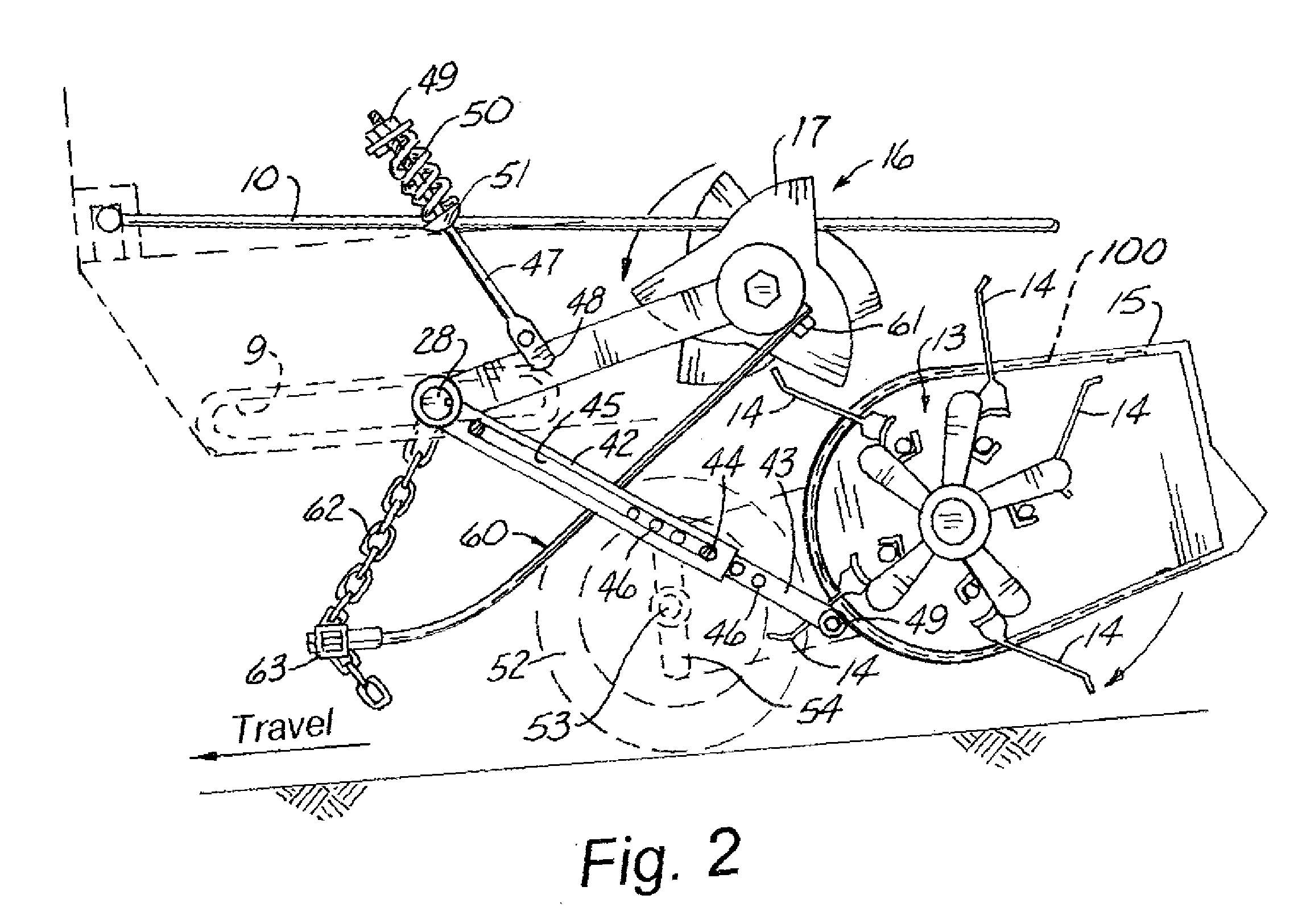Plastic Bands or Plastic Covers for Bands Located Between Tines on a Crop Pickup Apparatus
a crop pickup and tine technology, applied in the field of agricultural equipment, can solve the problems of increasing and decreasing the revolutions per minute of the control, corn stalks that cannot be easily pushed along, and corn stalks that cannot be easily pushed into the baler, so as to improve the feeding of corn stalks into the baler, reduce the number of control revolutions, and reduce the wear of pick-up teeth.
- Summary
- Abstract
- Description
- Claims
- Application Information
AI Technical Summary
Benefits of technology
Problems solved by technology
Method used
Image
Examples
Embodiment Construction
[0048]Referring now to the drawings wherein like reference numerals designate identical or similar parts throughout the several views, a preferred embodiment 1 of the present invention is illustrated in FIG. 1. The baler can, for example, be like the basic baler of U.S. Pat. No. 4,910,949 to Meyer, which is incorporated herein by reference in its entirety, though a more modern baler with more modern features can be used instead, for example the baler shown in U.S. Pat. No. 6,948,300 to Bandstra et. al, which is also incorporated herein by reference in its entirety. Of course it is to be understood that this invention can be used on any other type of baler, for example those that produce bales of a non-cylindrical shape, because the pickup sections of all prior art balers have crop material flow problems from time to time in the pickup sections thereof that could be solved by this invention.
[0049]The baler shown in FIG. 1 is towed by a tractor 11. The tractor 11 powers the baler thro...
PUM
 Login to View More
Login to View More Abstract
Description
Claims
Application Information
 Login to View More
Login to View More - R&D
- Intellectual Property
- Life Sciences
- Materials
- Tech Scout
- Unparalleled Data Quality
- Higher Quality Content
- 60% Fewer Hallucinations
Browse by: Latest US Patents, China's latest patents, Technical Efficacy Thesaurus, Application Domain, Technology Topic, Popular Technical Reports.
© 2025 PatSnap. All rights reserved.Legal|Privacy policy|Modern Slavery Act Transparency Statement|Sitemap|About US| Contact US: help@patsnap.com



